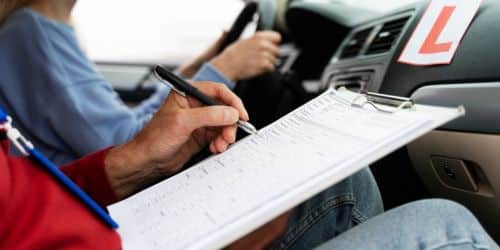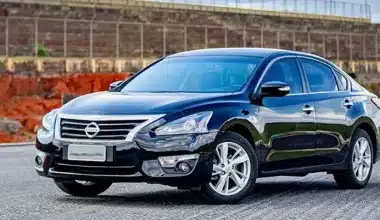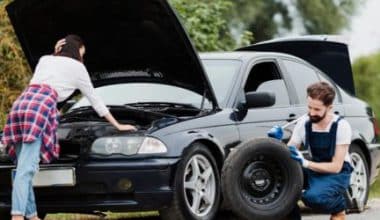It is legally prohibited to drive anywhere in the United States unless you can provide evidence of your ability to pay for damages or liabilities in the event of an accident. However, this does not imply that every driver has auto insurance. A 2017 survey by the Insurance Research Council found that almost one in eight drivers do not have insurance.
What happens if the driver who caused the accident does not have insurance? Imagine that you suffer injuries in a hit-and-run incident or from a driver who is not carrying liability insurance. In that case, uninsured motorist coverage may assist with covering your medical expenses and auto repair costs. So, in this article, we will discuss the type of coverage, what it covers, and how it differs from other forms of auto insurance, as well as whether your state requires it.
What is Uninsured Motorist Coverage (UM)?
An auto insurance policy’s uninsured motorist (UM) coverage protects you if you are involved in an accident with an uninsured driver. If you have uninsured motorist coverage, it covers medical expenses for you and your passengers and, in some instances, car damage. Uninsured motorist coverage (UM) is an optional endorsement you can add to your policy in some areas, but it is required in others for auto insurance policies.
How Uninsured Motorist Coverage Works
Most state laws require drivers to maintain a certain amount of auto liability insurance coverage; these regulations differ from one state to the next. The only states in the US without a minimum level of auto insurance coverage are New Hampshire and Virginia, where drivers can choose not to carry insurance for a charge.
According to the Insurance Research Council, around one in eight drivers in the United States do not carry insurance despite these rules. In their most current research on the topic, published in 2021, the group discovered that, at 29.4%, Mississippi had the most significant percentage of uninsured drivers, followed by Michigan, Tennessee, New Mexico, and Washington. At 1%, New Jersey has the lowest rate of uninsured drivers among all states.
About half of the states, plus Washington, D.C., require uninsured motorist coverage on auto insurance policies due to the risk of a potential collision with an uninsured driver. Several other states also demand it in certain circumstances, such as when you select a liability limit higher than the state minimum.
In the event of an accident where the at-fault driver does not have insurance, your uninsured motorist coverage may pay for the subsequent damages to your car or your medical expenses. Since a hit-and-run driver would likewise be regarded as an uninsured motorist, UM coverage may also assist with the cost of repairs following this kind of collision. It may not matter if you were hit-and-run or if the other party was at fault if you do not have uninsured motorist coverage.
Uninsured Motorist Coverage Cost
The cost of auto insurance varies as much as the automobile owner. Your driving history, the policy levels you select, and the kind of car you drive are just a few of the variables that insurance companies consider when determining your costs.
State insurance regulations may also impact your premium; the more coverage your state mandates, the higher your costs will be. Due to higher theft rates, vandalism, and accidents, city drivers pay more than those in rural areas.
The price may differ depending on whether you have to buy it or merely want to because of the above causes. An Insurance Research Council study from 2021 states that drivers spend an average of $78 for uninsured motorist coverage. Generally speaking, stacked insurance policies are more expensive than unstacked ones.
Make sure you compare quotes and coverage whenever you look for the finest auto insurance for your needs. A policy that you can afford and that will offer sufficient coverage in the case of an accident can be found by considering your assets and budget.
The Types of Uninsured Motorist Coverage
Your auto insurance policy may allow you to add two kinds of uninsured motorist coverage. GEICO provides Uninsured Motorist Property Damage (UMPD) and Uninsured Motorist Bodily Injury (UMBI) policies.
#1. Uninsured Motorist Bodily Injury Coverage (UMBI)
Your UMBI coverage typically covers the following expenses if a driver without auto insurance hurts you:
- Medical Costs
- Funeral Costs
- Diminished Income
- Anguish and Pain.
You can file a claim under other insurance policies, such as health insurance, medical payments, or personal injury protection. In the interim, UMBI might assist in paying for your additional non-medical costs, like pain and suffering.
#2. Uninsured Drivers Property Damage Coverage (UMPD)
Uninsured Motorist Property Damage pays for auto repairs if an uninsured driver causes damage to your vehicle. Should your vehicle policy lack UMPD or collision coverage, you will be responsible for covering the cost of damages or bringing a legal claim against the negligent driver.
#2. Underinsured Motorist (UIM) Coverage:
Certain states offer coverage for underinsured motorists. When at-fault drivers cause an accident and don’t have enough insurance to cover your losses or injuries, this policy helps shield you. The categories for UIM are property damage and bodily injury, much like UM.
What Does Uninsured Motorist Coverage Pay For?
Coverage for uninsured drivers can cover the following:
- Medical expenses
- Lost pay if the automobile accident prevents you from working
- Compensation for misery and agony
- Funeral costs
- The driver without insurance does not receive any compensation from uninsured motorist coverage.
Additionally, you can purchase uninsured motorist property damage (UMPD) in certain states. If an uninsured driver hits you, it covers the cost of the damage to your car. Keep in mind that regardless of whether the individual who hit you has insurance or not, collision coverage, which is optional and available in every state, can also cover the damage to your vehicle.
Consider the scenario in which a driver’s liability insurance is insufficient to cover your medical expenses after an automobile accident involving you and your passengers. In that case, UIM will pay for your medical bills and other related costs.
If I Have Collision Coverage, Do I Still Require Uninsured Motorist Coverage?
Even if you have collision coverage, you will still need uninsured motorist coverage if mandated in your area. However, if you have collision insurance and uninsured driver property damage coverage is optional in your jurisdiction, you might not require it.
Additionally, it might aid in covering rollovers and other single-car incidents and collisions with objects, including skidding into a guardrail or hitting a fence.
However, collision insurance does not cover physical harm, so you might still want to get uninsured bodily injury coverage. Suppose an uninsured or underinsured driver causes a collision, and you sustain injuries and do not have uninsured or underinsured motorist coverage. In that case, you might be responsible for paying your medical bills.
Is Uninsured Motorist Coverage Required?
Uninsured motorist coverage is not necessary for auto insurance in every state, but it is in many, and it can be a very helpful form of financial security. In addition to shielding you from expensive damage from uninsured drivers, this coverage may shield you from hit-and-run incidents in some states and jurisdictions. To drive legally, you must obtain uninsured motorist coverage if you reside in a state where it is mandated. Regardless of whether it is required, adding uninsured motorist coverage to your auto insurance policy could provide a crucial financial safeguard should you be involved in an accident with an uninsured driver.
Where can I Find the Uninsured Motorist Coverage on My Policy?
Examining the declarations page of your existing auto insurance is the simplest method to determine if you have uninsured driver coverage. This paper lists the deductible amounts, insurance limitations, and coverage details for you. Remember that the laws governing auto insurance vary depending on where you reside.
Which States Mandate Coverage for Uninsured Drivers?
Twenty states plus the District of Columbia require drivers to carry uninsured or underinsured motorist coverage. It can be an add-on coverage option for your auto insurance policy in other states.
States including Connecticut, Illinois, Kentucky, Maine, Maryland, Minnesota, Nebraska, New Jersey, New York, North Carolina, North Dakota, Oregon, South Dakota, Vermont, Virginia, and West Virginia require coverage for uninsured and underinsured motorists.
Make sure to inquire with your state’s transportation agency about the availability of uninsured motorist coverage as a coverage choice, as well as the minimum amount of coverage that is necessary.
Coverage for Underinsured and Uninsured Drivers
Even though some drivers carry insurance, their policy limitations might not be sufficient to pay for an accident’s total cost of a claim. Even though most states mandate that drivers carry at least liability coverage, a driver looking to cut costs on their insurance may choose to carry the lowest levels of coverage, which could have a negative financial impact on other drivers in the event of an accident.
It’s critical to understand this distinction between underinsured motorist coverage (UIM) and uninsured motorist coverage (UMC), which covers situations where the at-fault driver’s insurance is partially paid but insufficient to cover all your losses. Not all states that mandate UM coverage also require UIM coverage; if unsure, contact your state’s Department of Motor Vehicles.
What are the Benefits of UIM?
UIM coverage offers accident victims a vital safety net by helping to pay for medical costs and lost income that is beyond the at-fault driver’s policy limits.
What is UIM Insurance in SC?
A vehicle insurance policy known as “underinsured motorist coverage,” or “UIM,” may kick in if the driver at fault has insufficient insurance. The at-fault driver has insurance, unlike UM insurance, but the limitations of the vehicle’s liability coverage are insufficient to cover all of your losses.
Does UIM Coverage Stack?
Combining coverage limits from different policies a driver is on or from different cars on a single policy is known as stacked insurance. Only underinsured motorist (UIM) or uninsured motorist (UM) bodily injury coverage is stackable with your auto insurance. UM and UIM property damage coverage cannot be stacked.
How Does UIM Work in Florida?
Your Uninsured Motorist policy will reimburse you if the at-fault driver does not have liability coverage. If the negligent driver’s liability insurance cannot compensate for your accident-related injuries, your Underinsured Motorist will pick up the tab.
What is UIM Authentication?
Authentication serves as a means of confirming your identity. Before giving you access to the application, UIM requires username and password authentication.
How Long do You have to File a UIM Claim in Texas?
Instances of contract breach are subject to a four-year statute of limitations. Additionally, this would cover uninsured motorist (UM/UIM) claims.
What is the Difference Between Stacked and Unstacked UIM?
Unstacked auto insurance is the antithesis of stacked auto insurance, having separate limits for UM and UIM coverage. Even if you live in the same home as another covered driver or insure more than one car, the restrictions stay distinct.
Does Texas Require UIM?
The policyholder, their family, any passengers in their automobile, and anyone driving your car with permission are all covered by UM/UIM. Insurance providers are required by law to include UM/UIM coverage in an automobile insurance policy in Texas. You are under no need to accept it, though.
Conclusion
After a collision involving a driver who lacks insurance, uninsured motorist coverage pays for your passengers and your medical bills, as well as any damage to your vehicle. In some states, it is a must-have, whereas in others, it is an optional coverage. Following hit-and-run incidents, uninsured motorist coverage offers further protection.
- CAR INSURANCE COLORADO: Coverage, Cost & Best Options
- PENNSYLVANIA CAR INSURANCE: Coverage, Cost & More
- Best Car Insurance Companies in Houston, TX 2023
- WISCONSIN CAR INSURANCE: Coverage, Cost & Best Options
- THE BEST CHEAP CAR INSURANCE IN WISCONSIN FOR 2023






